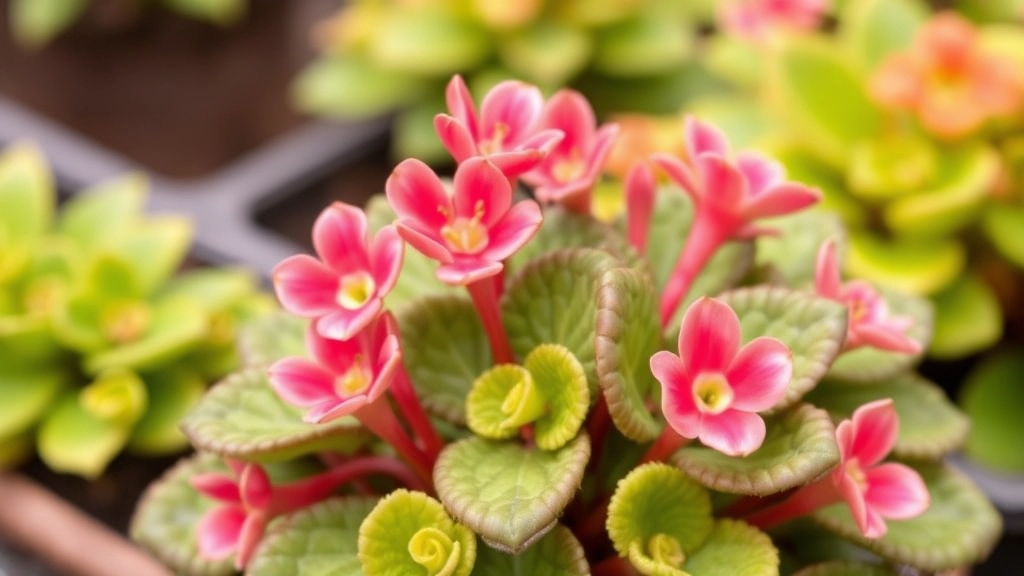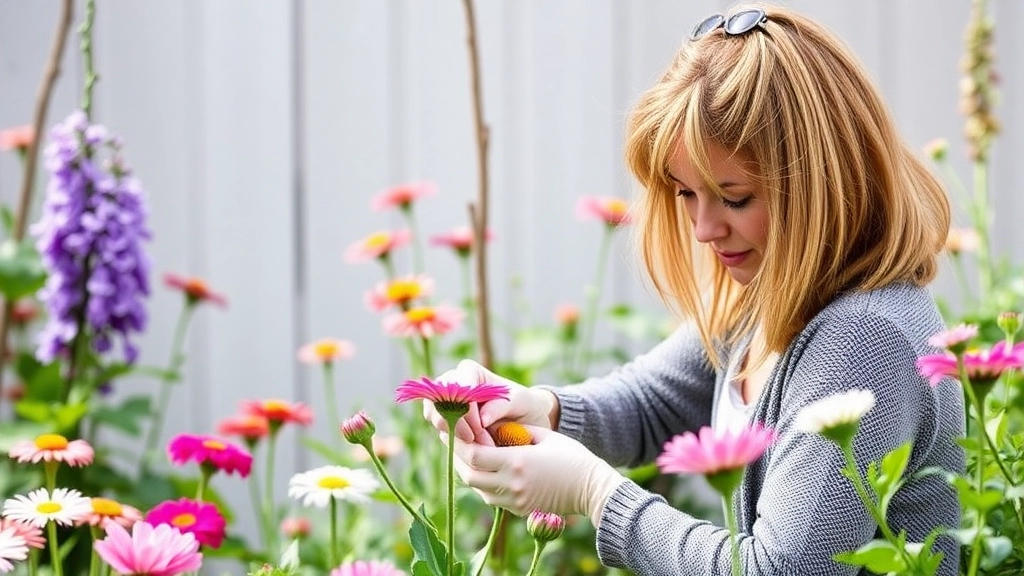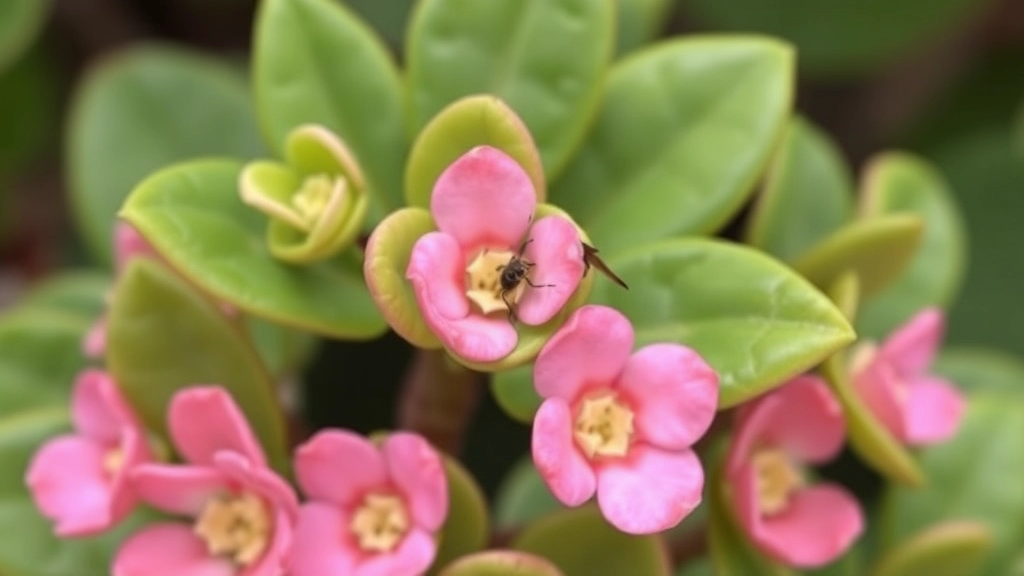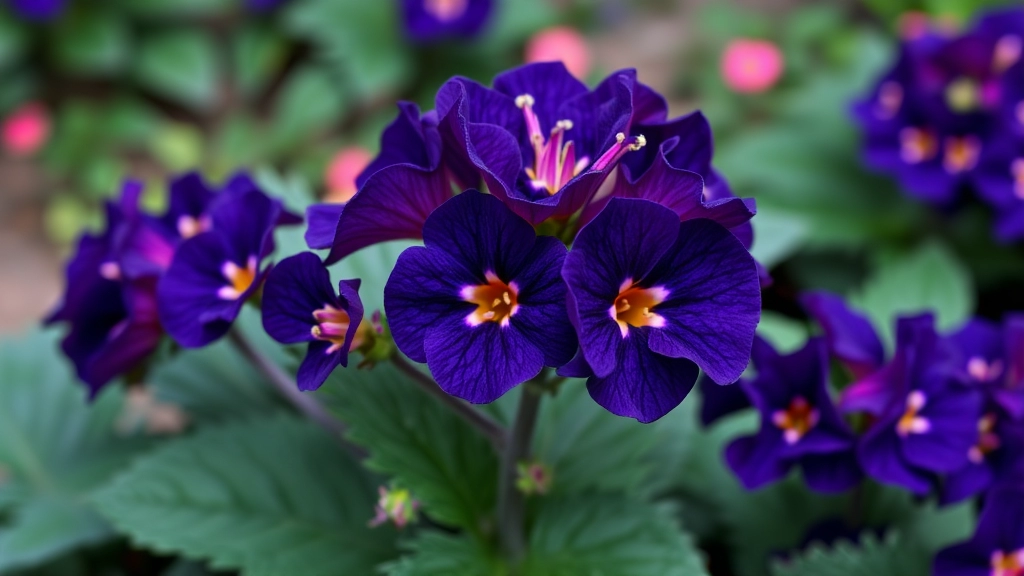Dark Blue Kalanchoe Flaming Katy
When it comes to the Dark Blue Kalanchoe Flaming Katy, plant enthusiasts are often intrigued by its unique hue and vibrant appeal. This particular variety of Kalanchoe Blossfeldiana, commonly known as Flaming Katy, stands out with its striking colour, making it a sought-after addition to any home or garden. Whether you’re looking to enhance your indoor plant collection or add a pop of colour to your outdoor space, understanding the characteristics and care requirements of this plant is essential.
Care Requirements
To ensure your Dark Blue Kalanchoe Flaming Katy thrives, it’s crucial to provide the right growing conditions. This includes optimal light, temperature, and humidity levels. Additionally, knowing how to water the plant properly and choosing the right soil can prevent common issues like root rot. With the right care, you can enjoy the beauty of this unique succulent and even propagate it to share with others.
Characteristics of Dark Blue Kalanchoe Flaming Katy
When considering houseplants that stand out, many of us wonder about the unique features that make a plant truly special. The Dark Blue Kalanchoe Flaming Katy is one such plant that captivates many with its stunning visual appeal.
Visual Appeal
The Dark Blue Kalanchoe Flaming Katy showcases deep, rich blue flowers that create a striking contrast against its succulent green leaves.
- Flower Shape: The blooms are typically star-shaped, adding a whimsical touch.
- Leaf Structure: The leaves are fleshy and rounded, which is characteristic of Kalanchoe plants.
Growth Habit
This variety tends to grow compactly, making it ideal for small spaces.
- Height: It usually reaches around 30 cm (12 inches) tall.
- Spread: The plant can spread up to 45 cm (18 inches) wide, providing a bushy appearance.
Seasonal Interest
One of the appealing traits of the Dark Blue Kalanchoe is its extended blooming period.
Optimal Growing Conditions for Kalanchoe

So, you’ve got your Dark Blue Kalanchoe Flaming Katy, and now you’re wondering: what does it really need to thrive?
Light Requirements
- Direct sunlight: Aim for at least 6 hours a day.
- Filtered light: If the sun is too harsh, a bit of shade won’t hurt.
Temperature Preferences
- Ideal range: Keep it between 18°C to 24°C.
- Avoid frost: These beauties aren’t fans of chilly weather.
Humidity Levels
- Low humidity: Kalanchoe prefers drier air, so no need for fancy misters.
- Good air circulation: Helps prevent fungal issues.
Soil Type
- Well-draining soil: A cactus mix or a blend with perlite works wonders.
- pH level: Aim for slightly acidic to neutral (around 6.0 to 7.0).
Potting Tips
- Choose a pot with drainage holes: This prevents waterlogging.
- Repot every couple of years: Refresh the soil and give those roots some room.
Watering and Soil Requirements
When it comes to caring for your Dark Blue Kalanchoe Flaming Katy, understanding the watering and soil requirements is crucial. Many plant enthusiasts often wonder how much water is too much or too little for their Kalanchoe.
Encouraging Blooming and Flower Care

One of the joys of cultivating Dark Blue Kalanchoe Flaming Katy is witnessing its vibrant blooms. However, many plant enthusiasts often wonder how to encourage these stunning flowers to thrive.
Key Factors for Blooming
To ensure your Kalanchoe produces abundant flowers, consider the following:
- Lighting: Bright, indirect sunlight is essential. Too much direct sun can scorch the leaves, while insufficient light may hinder blooming. Aim for around 6 hours of bright light daily.
- Temperature: Kalanchoe prefers a warm environment, ideally between 18°C to 24°C. Avoid sudden temperature drops, as they can stress the plant.
- Fertilisation: Use a balanced, water-soluble fertiliser every 4-6 weeks during the growing season. This provides the nutrients necessary for robust blooms.
- Pruning: Deadheading spent flowers encourages new growth. Trim back any faded blooms to direct energy towards new flower production.
Flower Care Tips
Maintaining the health of your Kalanchoe is crucial for its flowering potential. Here are some practical care tips:
- Humidity: Kalanchoe thrives in moderate humidity. If your home is particularly dry, consider misting the plant occasionally.
- Air Circulation: Ensure good airflow around the plant to prevent fungal diseases, which can affect blooming.
- Pest Management: Regularly inspect for pests like aphids and mealybugs. Treat infestations promptly with insecticidal soap or neem oil.
By following these guidelines, you can create an environment that encourages your Dark Blue Kalanchoe Flaming Katy to flourish and bloom beautifully.
Propagation Techniques for Flaming Katy
As we delve into the propagation techniques for Dark Blue Kalanchoe Flaming Katy, it’s essential to understand that this process can be both rewarding and straightforward.
Many gardeners wonder how to expand their collection of these vibrant plants without spending a fortune. Fortunately, Flaming Katy is quite forgiving when it comes to propagation.
Methods of Propagation
- Leaf Cuttings
- Select a healthy leaf from the parent plant.
- Allow the cutting to dry for a few hours to form a callus.
- Place the leaf in well-draining soil, ensuring it is upright.
- Water lightly and keep in a warm, bright location.
- Stem Cuttings
- Choose a healthy stem and cut it just below a node.
- Remove the lower leaves to expose the node.
- Let the cutting dry for a day to prevent rot.
- Plant the cutting in soil, ensuring the node is buried.
- Water sparingly until roots develop.
- Offsets
- Look for small offsets or “pups” at the base of the parent plant.
- Gently separate these offsets from the main plant.
- Replant them in their own pots with suitable soil.
- Water lightly and place in a bright location.
Tips for Successful Propagation
- Timing: Spring is the best time for propagation, as the plant is actively growing.
- Environment: Keep the cuttings in a warm, humid environment to encourage root development.
- Patience: It may take a few weeks for roots to establish, so don’t rush the process.
By following these techniques, you can easily propagate your Dark Blue Kalanchoe Flaming Katy and enjoy the beauty of these plants in multiple locations. For more detailed steps, you can refer to the step-by-step guide to florist Kalanchoe propagation. Additionally, if you’re interested in learning about the different varieties of Kalanchoe, check out this comprehensive guide.
Common Pests and Diseases in Kalanchoe Plants

So, you’ve got your Dark Blue Kalanchoe Flaming Katy thriving, but then you notice something off.
What’s that tiny pest crawling on the leaves?
Pests and diseases can sneak up on even the most attentive plant parent.
Common Pests
- Mealybugs
- These little white, cottony bugs love to hide in leaf joints.
- They suck the sap, weakening your plant.
- Aphids
- Small and green, these pests multiply quickly.
- They can distort leaves and stunt growth.
- Spider Mites
- Tiny but mighty, they leave fine webbing on your plant.
- They thrive in dry conditions, so keep an eye out!
- Scale Insects
- They look like small bumps on stems and leaves.
- They can be tricky to spot but cause damage over time.
Common Diseases
- Powdery Mildew
- This fungal disease appears as a white, powdery coating.
- It thrives in high humidity and poor air circulation.
- Root Rot
- Caused by overwatering, this disease can be fatal.
- Yellowing leaves and a mushy stem are telltale signs.
- Leaf Spot
- Dark spots on leaves can indicate bacterial or fungal infections.
- It often arises from water sitting on leaves.
Prevention and Treatment
- Keep It Clean
- Wipe leaves regularly to remove dust and pests.
- Proper Watering
- Avoid overwatering to prevent root rot.
- Good Airflow
- Ensure your plant has enough space around it for air circulation.
- Neem Oil
- A natural pesticide that can help control pests without harsh chemicals.
- Isolation
- If you spot a pest, isolate the affected plant to prevent spreading.
Special Care for Dark Blue Varieties
When caring for Dark Blue Kalanchoe Flaming Katy, specific considerations can make a significant difference in their health and vibrancy. Many plant enthusiasts often wonder how to best nurture these stunning varieties.
Unique Characteristics of Dark Blue Kalanchoe
Dark Blue Kalanchoe Flaming Katy is not just visually striking; it also requires a bit more attention than standard varieties. Here are some key aspects to keep in mind:
- Light Requirements: These plants thrive in bright, indirect sunlight. Too much direct sun can scorch their leaves, while too little can hinder blooming.
- Temperature Sensitivity: Ideal temperatures range from 18°C to 24°C. Protect them from cold drafts and sudden temperature changes.
- Humidity Levels: Dark Blue varieties prefer moderate humidity. If your home is dry, consider using a humidity tray or misting occasionally.
Nutrient Needs
To ensure your Dark Blue Kalanchoe remains vibrant, regular feeding is essential:
- Fertiliser: Use a balanced, water-soluble fertiliser every four to six weeks during the growing season (spring and summer).
- Nutrient-Rich Soil: A well-draining potting mix is crucial. Consider adding perlite or sand to enhance drainage.
Pruning and Maintenance
Regular maintenance is vital for these plants:
- Deadheading: Remove spent flowers to encourage new blooms and maintain plant health. For more detailed guidance, check out our guide on deadheading Kalanchoe flowers.
- Leaf Care: Gently wipe leaves with a damp cloth to remove dust, allowing the plant to breathe and photosynthesize effectively.
Signs of Distress
Keep an eye out for signs that your Dark Blue Kalanchoe may need immediate attention:
- Yellowing Leaves: This could indicate overwatering or poor drainage. Learn more about common issues and their solutions in our article on Kalanchoe leaf problems.
- Wilting or Drooping: Often a sign of underwatering or extreme temperature fluctuations.
By staying attuned to these specific care requirements, you can ensure your Dark Blue Kalanchoe Flaming Katy thrives.
Popular Uses for Flaming Katy in Home and Garden
So, you’ve got your Dark Blue Kalanchoe Flaming Katy all set up, and you’re probably wondering how to make the most of it in your home and garden, right?
Well, let me tell you, these little beauties aren’t just pretty faces. Here are some popular ways to incorporate them into your space:
- Indoor Decor:
- Place them on your windowsill or coffee table.
- Their vibrant blooms add a pop of colour and life to any room.
- Outdoor Gardens:
- They work wonders in rock gardens or as border plants.
- Group them with other succulents for a stunning display.
- Gifts:
- A potted Flaming Katy makes a thoughtful gift for friends or family.
- Perfect for housewarming or special occasions.
- Event Decorations:
- Use them to brighten up tables for weddings or parties.
- Their long-lasting flowers mean they won’t wilt before the event’s over.
- Terrariums:
- Mix them in with other small plants for a mini garden.
- They thrive in the contained environment of a terrarium.
- Educational Purposes:
- Great for teaching kids about plant care and growth.
- Their easy maintenance makes them perfect for budding gardeners.
In short, the Dark Blue Kalanchoe Flaming Katy is versatile and can fit into various settings. For more information on how to care for them, check out this care guide for Kalanchoe after blooming. Additionally, if you’re interested in expanding your collection, you can buy flowering Kalanchoe plants online.
FAQs about Dark Blue Kalanchoe Flaming Katy
What are the optimal growing conditions for Dark Blue Kalanchoe Flaming Katy?
To thrive, the Dark Blue Kalanchoe Flaming Katy needs at least 6 hours of direct sunlight daily, a temperature range of 18°C to 24°C, low humidity levels, and well-draining soil with a pH level between 6.0 to 7.0. Good air circulation and a pot with drainage holes are also essential.
How can I encourage my Dark Blue Kalanchoe Flaming Katy to bloom?
Ensure your plant gets bright, indirect sunlight for around 6 hours daily, maintains a warm environment between 18°C to 24°C, and is fertilized every 4-6 weeks during the growing season. Pruning spent flowers also helps direct energy towards new blooms.
What are the common pests that affect Kalanchoe plants?
Common pests include mealybugs, aphids, spider mites, and scale insects. These pests can weaken the plant by sucking its sap or causing damage to the leaves and stems.
What diseases should I watch out for in my Kalanchoe plant?
Be on the lookout for powdery mildew, root rot, and leaf spot. These diseases often arise from high humidity, overwatering, or poor air circulation.
How can I prevent and treat pests and diseases in my Kalanchoe plant?
Regularly wipe the leaves to remove dust and pests, avoid overwatering, ensure good airflow, and use natural pesticides like neem oil. If you spot a pest, isolate the affected plant to prevent spreading.
What are some key flower care tips for Dark Blue Kalanchoe Flaming Katy?
Maintain moderate humidity, ensure good air circulation, and manage pests promptly with insecticidal soap or neem oil. These steps will help keep your plant healthy and encourage blooming.
How often should I repot my Dark Blue Kalanchoe Flaming Katy?
Repot your Kalanchoe every couple of years to refresh the soil and give the roots some room to grow. Make sure to choose a pot with drainage holes to prevent waterlogging.
What type of soil is best for Kalanchoe plants?
Kalanchoe prefers well-draining soil. A cactus mix or a blend with perlite works well. Aim for a slightly acidic to neutral pH level, around 6.0 to 7.0.
Is it necessary to mist my Kalanchoe plant?
No, Kalanchoe prefers drier air, so there’s no need for fancy misters. However, if your home is particularly dry, occasional misting can be beneficial.
What should I do if my Kalanchoe plant is exposed to frost?
Kalanchoe plants are not fans of chilly weather. If exposed to frost, try to move your plant to a warmer environment immediately to prevent damage.
References
-
Gardening Know How: Kalanchoe Plant Care â How To Grow A Kalanchoe
-
The Spruce: How to Grow Kalanchoe
-
The Old Farmer’s Almanac: Kalanchoe
